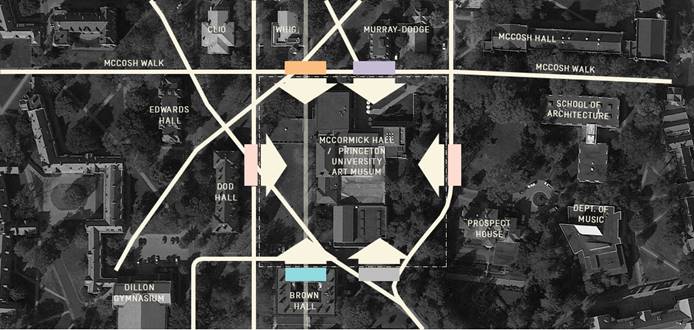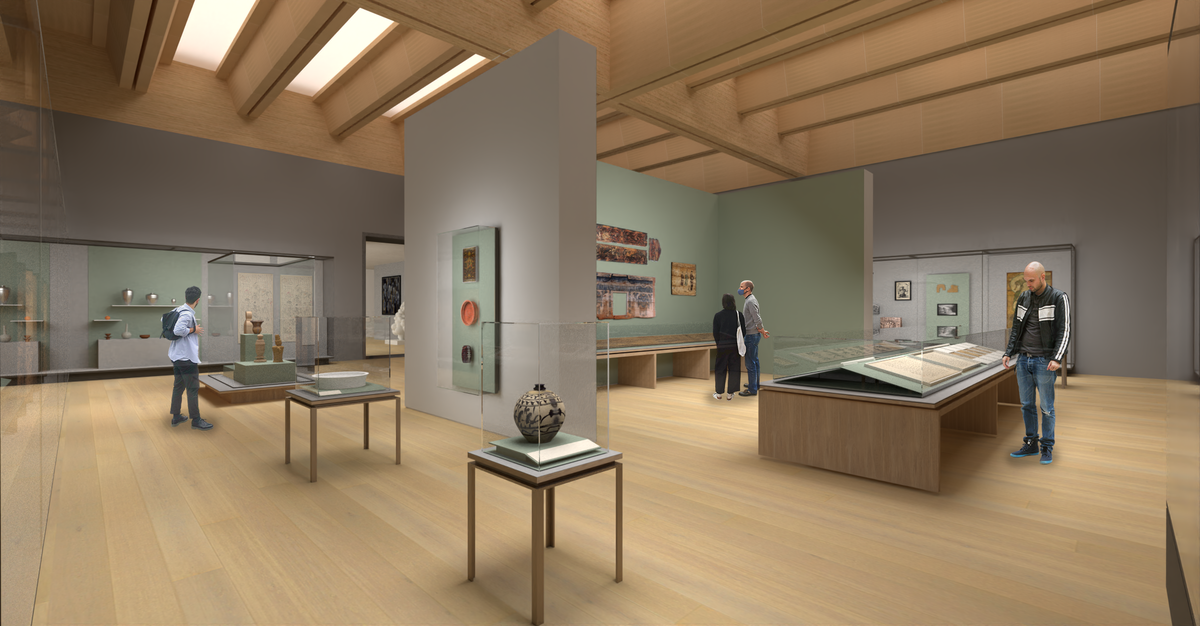New Museum

Construction of a bold and welcoming new Museum building at the heart of the University campus is now underway. Announced in 2018, overseen by Art Museum Director James Steward, and designed by the firm Adjaye Associates, in collaboration with executive architects Cooper Robertson, the new Art Museum building will roughly double space for the exhibition, conservation, study, and interpretation of the Museum’s globe-spanning collections; for mounting exhibitions; and for a new range of social spaces and visitor amenities. At a time of self-reflection for both museums and universities, the design embodies the Museum’s long-standing commitment to serve as a hub and a gathering place, a nexus for the arts and humanities—a metaphor for the college campus at its best—that affords encounters with cultures past and present from around the world and seeks to foster stronger citizenship among its University, local, and global communities. The new Museum is anticipated to open in 2025.
The building's architecture and the globe-spanning galleries within will invite visitors to see themselves as citizens of a broader set of communities,” notes Steward, “which in turn will, we hope, nurture a deeper sense of our shared humanity. The design will give us a building that fosters new modes of investigation, allows us to deploy our collections in new and more inclusive ways, and affords new moments of aspiration and inspiration.


At the Heart of a Historic Campus
The new building is rising on the site of the current Museum, at the heart of Princeton’s storied campus, placing its globe-spanning collections in the daily path of the University community and serving as a welcoming gateway for visitors from around the world. The design inserts itself dynamically into campus life with key pedestrian pathways flowing into and through the Museum via two “art walks”—thoroughfares that function as the new building’s circulatory spine. Seven “pavilions” scale the size of the new building to account for the historic buildings nearby and to allow for more varied gallery experiences. The design also shapes a new home for the University’s Department of Art & Archaeology, while retaining Marquand Library; together, the three units will continue to function as a dynamic center for research and teaching.

Designed for Dynamic Teaching and Scholarship
The Art Museum is a major center for the study of the visual arts and the humanities in the United States, and the new design reaffirms its commitment to the evolving practice of object-based inquiry and the principle that excellence should be available to everyone. While the Museum’s expansive collections include nearly 115,000 works of art from cultures all over the globe, no more than 2 percent of these were on display at any time in the former facility.

In addition to expanded galleries for displaying changing selections from the collections and for mounting temporary exhibitions, visible storage will provide additional opportunities for scholars and students to access the collections freely.

A New Way to Encounter Art
The design of the new building allows the Museum’s globe-spanning collections to be exhibited substantially on a single level, shaping new ways of encountering the collections, privileging ideas of cultural contact and exchange, and fostering new modes of storytelling. By challenging the traditional hierarchies inherent in multilevel gallery display, the Museum will foster moments of discovery and surprise as visitors encounter ideas and objects in narratives that move beyond the boundaries of geography and chronology. This approach brings architecture and curatorial practice together in a manner that is rare among major cultural institutions.

About the Building
The design embodies flexibility, openness, and connectivity to break down barriers to participation and invite entry by all.
The new Museum will occupy three stories, featuring seven primary interlocked pavilions containing many of the building’s new galleries, interspersed with more intimate gallery spaces that break down the scale of the whole while knitting the elements of the new building into the campus landscape. The exterior of the building is characterized by alternating rough and polished stone surfaces inspired by the rich history of the surrounding environment. With a pulsating rhythm that responds to the delicate forms of nearby buildings and with the “push-pull” of its undulating facades, the new facility will welcome visitors from all directions through a design that strives to be “all fronts and no backs.”

Numerous bronze and glass “lenses” are positioned between the pavilions to break up the scale of the complex and to shape framed glimpses into the Museum and extraordinary vistas out onto the beautiful Princeton campus. The design includes outdoor terraces that diminish borders between indoors and out, including spaces for performances and events that can accommodate 200 to 2,000 users. A Grand Hall for lectures, performances, and events; numerous classroom spaces and two “creativity labs”; and a rooftop café will serve University audiences, adults, and K to 12 students. At the ground level, permeability and accessibility are prioritized while affording tantalizing and uplifting glimpses into the galleries—most of which will be located on the building’s second level—even during times when the galleries might be closed.